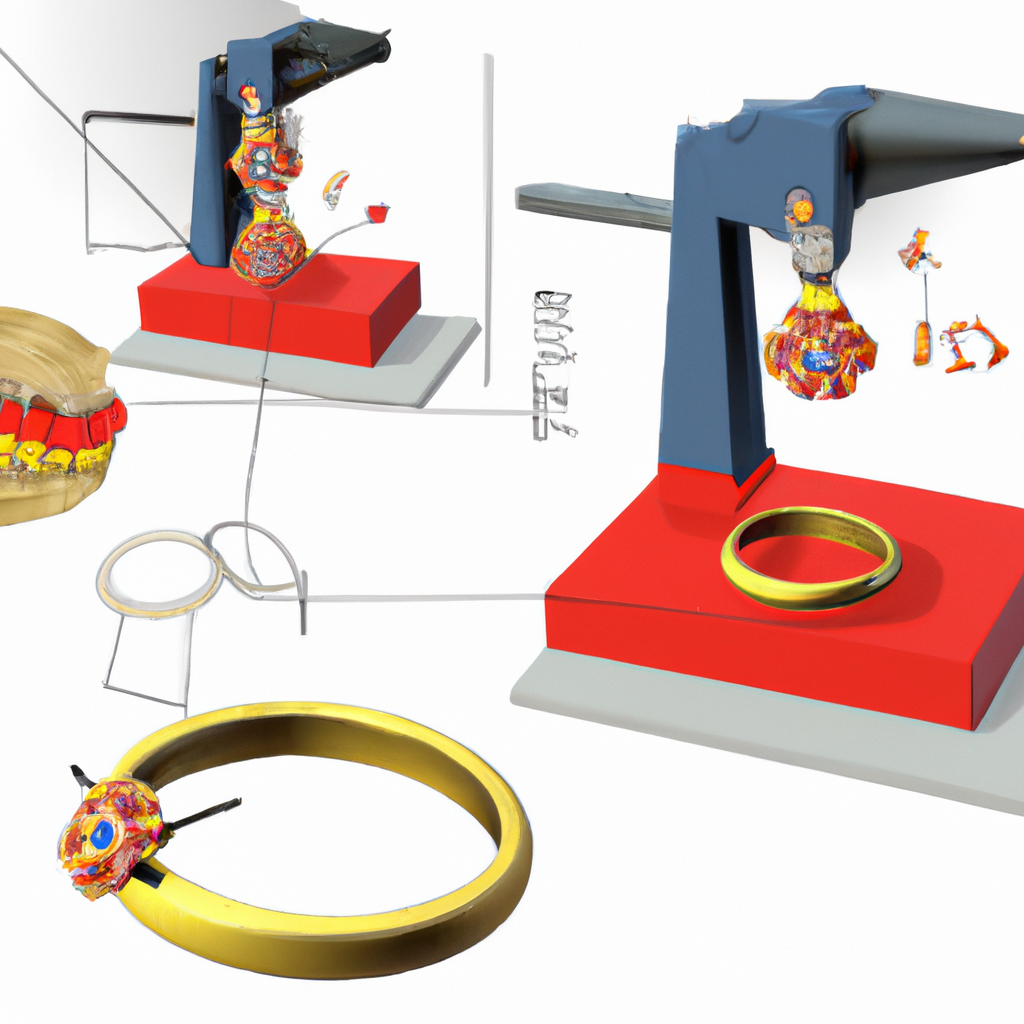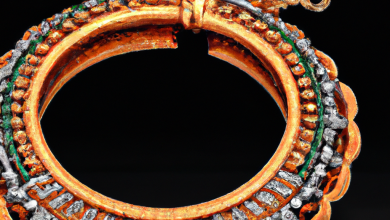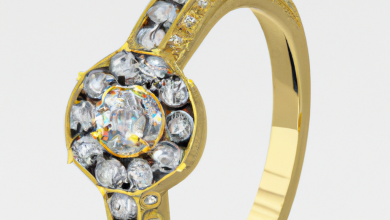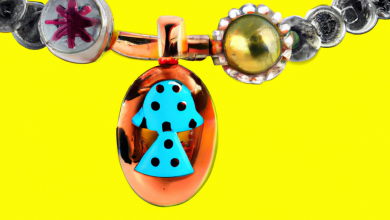
I. Introduction
Jewelry has been part of human culture for thousands of years. From simple beads to elaborate metalwork, jewelry has served as a means of status, beauty, and cultural expression. However, it is perhaps the craftsmanship behind each piece that truly elevates its value and meaning.
Craftsmanship in jewelry making refers to the combination of skills and techniques used to create each piece. From casting to setting, each step requires precision and attention to detail to ensure the final product is not only beautiful but also functional.
The history of jewelry making can be traced back to ancient civilizations such as Egypt, Greece, and Rome, where gold and precious stones were used to create intricate pieces that showcased the wealth and power of their wearers. In Europe, the art of jewelry making was perfected during the Renaissance era, with well-known jewelers such as Benvenuto Cellini and Pietro Tacca creating pieces that still leave us in awe today.
In America, jewelry making began as craftsmen immigrated from Europe and brought their techniques and traditions with them. However, it wasn’t until the late 19th century that American jewelry makers gained recognition for their unique style, which often incorporated Native American motifs and natural elements such as turquoise and silver.
Regardless of where or when it was made, craftsmanship has always been a crucial element in jewelry making. The value of a piece can depend greatly on the skill and artistry of the maker. Techniques such as filigree, repousse, and enameling, as well as materials such as diamonds, pearls, and precious metals, all require years of practice and expertise to master.
Today, there is a growing trend towards sustainable and ethical production methods, with many designers and consumers placing more value on handcrafted pieces made with responsibly sourced materials. As technology continues to advance in the industry, the art of jewelry making remains rooted in the mastery of traditional techniques and the skillful hands of a craftsmanship that has endured centuries.
In conclusion, the importance of craftsmanship in jewelry making cannot be overstated. Each piece is a testament to the creativity, skill, and attention to detail of the maker. Whether it is a centuries-old European design or a modern piece from an American artisan, the value of a piece of jewelry lies in the artistry behind it.

II. European Jewelry Making Techniques
Jewelry making is an ancient art that has been practiced in Europe for thousands of years. Over time, European jewelers have developed unique techniques and styles, which have become hallmarks of their craft. Some of the most traditional jewelry making techniques used by European jewelers include filigree, enameling, and casting.
Filigree, a centuries-old technique, involves the use of fine metal wires to create intricate decorations and patterns, often seen in ornate brooches, earrings, and necklaces. The technique requires a lot of skill, patience and fine motor skills, as well as the right tools and materials, such as pliers, fine metal wire, and a torch.
Enameling, on the other hand, is a technique that involves fusing powdered glass onto metal to create colorful designs and patterns. This technique was first used by ancient Egyptians, but it gained popularity in Europe during the Byzantine Empire, where it was used to create decorative objects and jewelry for the upper classes.
Finally, casting is a technique commonly used in the production of fine jewelry. Cast pieces are created by pouring liquid metal into a mould, which takes on the desired shape of the design. The casting method allows for the creation of identical pieces, which is especially important when producing pieces of jewelry that are part of a collection.
The history of European jewelry dates back to the ancient times, where craftsmen made use of gold, silver, and other precious metals to create jewelry that told stories of myths and legends. Throughout the centuries, Europe’s jewelry industry has developed some of the most iconic patterns and designs, including Art Nouveau, Art Deco, and Baroque styles.
Famous European jewelry designers, such as Cartier, Van Cleef & Arpels, and Bulgari, are known for their exquisite craftsmanship and use of high-quality gemstones. From Cartier’s iconic panther to Van Cleef & Arpels’ Alhambra designs, European jewelry designers have set the standard for luxury jewelry around the world.
European jewelry making techniques emphasize the importance of craftsmanship, detail, and precision in the creation of fine jewelry. Even in a world where technology plays an ever-increasing role in the jewelry industry, traditional European techniques continue to be respected and admired.
III. American Jewelry Making Techniques
The history of American jewelry begins with the Native American tribes who used natural materials and simple techniques to create intricate pieces of jewelry for both decoration and ceremonial purposes. However, it wasn’t until the late 19th century that American jewelry began to establish its own unique style and identity.
Contemporary American designers are known for their innovative designs and use of unconventional materials. Many designers combine traditional techniques with new materials and technology to create unique pieces of jewelry. The modern aesthetic of American jewelry also reflects the country’s diversity, blending styles and techniques from around the world.
One prominent American jewelry designer is David Yurman, known for his use of cable wires in creating bracelets, rings, necklaces, and earrings. Yurman’s jewelry is handcrafted in his studio in New York City, where he and his team of artisans use traditional techniques such as forging, casting, and setting stones. Other American designers, such as Alexis Bittar and Pamela Love, are also revered for their innovative designs and use of alternative materials.
Technology has also become an essential component in American jewelry making. For instance, computer-aided design (CAD) allows designers to create intricate designs with precision and speed. 3D printing is also becoming increasingly popular as it allows designers to create complex structures and shapes that would be otherwise impossible to achieve by hand.
Despite the use of technology, American jewelry designers still prioritize quality craftsmanship. Many designers also prioritize sustainable and ethical sourcing of materials. For instance, Brilliant Earth, a US-based jewelry company, ethically sources its diamonds and gemstones while also giving back to the communities that mine these materials.
In conclusion, American jewelry making techniques have evolved to establish their unique style and identity, blending traditional techniques with technology and unconventional materials. Emerging designers continue to push creative boundaries, while also recognizing the importance of craftsmanship, sustainability, and ethical sourcing.
IV. Similarities and Differences Between European and American Jewelry Making
While European and American jewelry making have their own distinct history and styles, there are also many similarities between the two. Let’s take a closer look at the materials used, techniques and styles, and inspirations in both European and American jewelry making.
Materials used:
Both European and American jewelry making use a variety of materials, including precious and semi-precious stones, metals such as gold, silver, and platinum, and non-metal materials like pearls, beads, and enamel. However, while Europeans tend to use more traditional materials, such as diamonds and other precious stones, Americans tend to experiment more with new and unusual materials, such as rubber, wood, and bone.
Techniques and styles:
Both European and American jewelry making have a rich history and a variety of traditional techniques that are still used today. However, while European jewelry making tends to be more focused on creating classic and timeless pieces with intricate details, American jewelry making is often more experimental and playful, with a focus on individuality and self-expression. In terms of styles, European jewelry often features more ornate and traditional designs, such as intricate filigree work and Art Nouveau-inspired pieces. American jewelry, on the other hand, often showcases bold and contemporary designs, with a focus on innovative shapes and eye-catching textures.
Inspirations:
The inspirations behind European and American jewelry making are also quite different. European jewelry is often inspired by the classical art and architecture of ancient Greece and Rome, as well as the natural world, such as flowers and animals. American jewelry, on the other hand, is often inspired by popular culture and contemporary art, such as graffiti and street art, as well as the natural world, such as the textures and patterns found in wood and stone.
Overall, while there are some similarities between European and American jewelry making techniques, materials, and inspirations, they each have their own unique styles and approaches. By exploring the rich history and traditions of both European and American jewelry making, we can gain a deeper appreciation for the incredible artistry and craftsmanship that goes into each and every piece.
V. Importance of Craftsmanship in Today’s Jewelry Industry
In today’s jewelry industry, craftsmanship has never been more important. As consumers become more aware of the environmental impact of their purchases, there is a growing interest in sustainable and ethical production methods. Handcrafted jewelry, in particular, has been gaining in popularity as it is seen as a timeless and valuable investment, rather than a disposable item.
Value of Handcrafted Jewelry:
Handcrafted jewelry is valued for its uniqueness, quality, and attention to detail. Every piece of handcrafted jewelry is made with care and precision, ensuring that each piece is one-of-a-kind. This level of attention to detail also ensures that the jewelry is of high quality, with every aspect of the piece carefully considered to ensure that it is both beautiful and functional.
Trend towards Sustainable and Ethical Production:
As consumers become more conscious of the environmental impact of their purchases, there is a growing trend towards sustainable and ethical production methods. Handcrafted jewelry is often made using traditional methods that rely on natural materials and sustainable production techniques. This reduces the environmental impact of the jewelry and ensures that the production process is ethically sound.
Future of Craftsmanship in the Jewelry Industry:
The future of craftsmanship in the jewelry industry is promising. As consumers become more discerning in their purchasing decisions, they are increasingly seeking out handcrafted, high-quality jewelry that is created with care and attention to detail. This trend towards value over quantity is likely to continue, meaning that the demand for handcrafted jewelry will remain strong.
Moreover, the use of technology in the jewelry industry is also paving the way for new opportunities for craftsmanship. Computer-aided design (CAD) software is becoming increasingly sophisticated, allowing jewelry designers to create intricate and complex designs that were previously impossible to achieve. However, this technology typically still requires skilled artisans to bring the designs to life, ensuring that the artistry and craftsmanship in jewelry making are still highly valued.
In conclusion, the importance of fine craftsmanship in jewelry making cannot be understated. Whether it is European or American jewelry making techniques, the intricate work and attention to detail by skilled craftsmen are highly valued. With the growing focus on sustainability and ethical production, handcrafted jewelry is becoming a highly sought-after investment. Moreover, the advancements in technology are also enabling artisans to explore new horizons and create unique designs. Craftsmanship in the jewelry industry is here to stay and will continue to be an essential component of this art form.
VI. Conclusion
Recap of the importance of fine craftsmanship in jewelry making
Jewelry making isn’t just about producing a pretty piece; it’s about creating timeless works of art that stand the test of time. The attention to detail, use of quality materials, and intricate techniques involved in craftsmanship ensure a piece of jewelry is a reflection of the artist’s skill and creativity, combined with the wearer’s style, taste, and personality.
Artisanal jewelry making involves a broad variety of techniques mastered over years and requires the artisan’s skill in using different tools and approaches to create a masterpiece.
Final thoughts on the techniques used in European and American jewelry making:
The art of jewelry-making has been perfected over centuries, and this fine craft continues to be celebrated globally today. Europe and America each possess their unique techniques that have evolved over time, and the influence of these techniques has transcended borders, leading to many exciting collaborations among designers worldwide.
The work of a jewelry maker is a delicate fusion of form and function that can never be automated. Hand crafting a piece requires the skill, creativity, patience, and attention to detail that cannot be replaced by technology. The touch of a human hand brings a piece to life and gives it a unique identity that cannot be replicated.
In conclusion, this article has explored the techniques used in European and American jewelry making that have made these regions leaders in the industry. Both have distinct techniques that are steeped in tradition and have continued to evolve over time. As the trend towards sustainable and ethical production gains momentum, the focus on craftsmanship becomes even more relevant. Given the importance of jewelry in everyday life, the ability to produce high-quality pieces has a profound impact on people’s sense of style, creativity, and culture.



